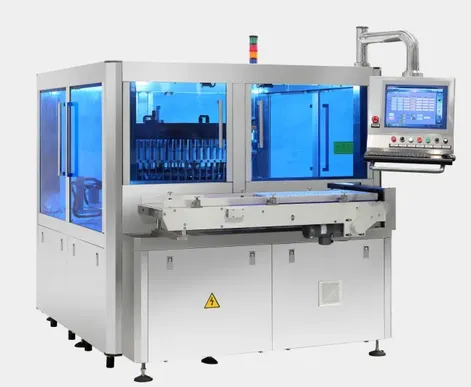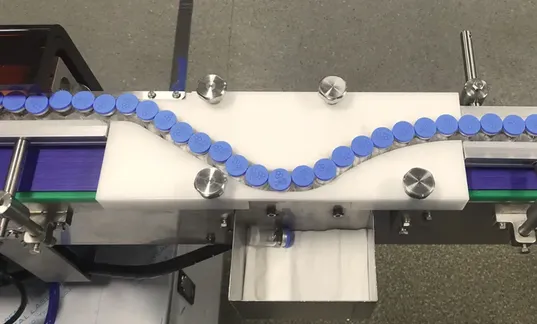
This inspection machine is purpose-built for inspecting freeze-dried powder (lyophilized) vials, whether made from molded or tubular glass. It performs automated detection of:
Typical inspection points include the vial bottom, cap area, powder cake, and outer surface, ensuring your product meets both visual and functional safety standards.

Engineered as an all-in-one inspection solution, this pharmaceutical inspection machine combines visual inspection for visible defects and laser spectral analysis for residual oxygen detection, offering unmatched accuracy, flexibility, and compliance for freeze-dried vial production.
Whether you're scaling up production or strengthening quality assurance, this inspection machine gives you the control, speed, and reliability you need for freeze-dried vial inspection.
This system conducts three critical inspection functions across multiple dedicated stations:
Each inspection type is assigned to one or more workstations, ensuring precise evaluation of all relevant areas across the vial body. This structure supports high-speed, consistent, and comprehensive inspection across every production batch.
The specific inspection tasks assigned to each station, as well as the corresponding inspection areas on the container body, are shown in Figure.
The products convoyed by belt, then transmitted from worm wheel for separation to infeed star-wheel, inspection turnplate, outfeed transmission star-wheel etc. for online inspection at inspection stations. The products will be transmitted separately to the corresponding tray by outfeed star-wheel control according to the real-time inspection results.
There are 7 inspection stations in total a tinfeed star-wheel, inspection turnplate and outfeed transmission star-wheel. The overall process flow and stations distribution of the equipment shown as figure:
This inspection system operates in two integrated stages to verify both visual integrity and residual oxygen levels in freeze-dried vials:
Using machine vision, each vial is rotated smoothly on the turntable while high-speed industrial cameras capture multiple images from different angles. These images are processed by a distributed computing system, which analyzes them for visible impurities or appearance defects. Based on the analysis, the system automatically separates qualified and defective vials.
This function relies on laser spectral analysis. As the vial passes through the inspection zone, a semiconductor laser emits a beam at a wavelength precisely aligned with oxygen’s absorption spectrum. A sensor on the opposite side measures oxygen levels by detecting absorption patterns. If the residual oxygen exceeds the preset threshold, the system flags the vial as non-compliant and removes it from the production line.
By combining these two advanced techniques in a single compact system, you gain precise, efficient, and fully automated inspection without compromising production speed or product safety.
Yes, our visual inspection machine is compatible with freeze-dried vials ranging from 2ml to 30ml. It inspects for:
AVI plays a critical role in ensuring product safety for injectables and lyophilized drugs, which are often administered directly into the body. By detecting foreign particulate matter (FPM) like glass or fibers, the system helps maintain product sterility and effectiveness. Missed defects could lead to costly recalls or regulatory action. With AVI, you minimize risk and ensure every unit meets global standards.
Unlike manual inspection, which can be subjective and fatigue-prone, automated systems:
In short, AVI improves accuracy, reliability, and traceability while reducing labor strain and the risk of human error.
Interested in learning more about our Visual Inspection and Leak Testing Equipment
Get in touch with us today!